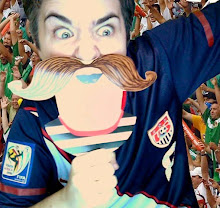The past few days have been busy busy busy. I hate to bore you with more boring lithography things, but this is pretty much all I do now. I'm torn between reporting on the Tamarind side of things and giving you the gossip on my printer-pals and personal stuff. But I know that many of my readers don't know anything about printmaking, so I feel the need to give a little more background. Maybe the next post will get into the juicy gossip.
With our plates and stones drawn and etched, we've begun the process of proofing and printing our first two editions of prints.
First, a few definitions:
In printmaking, a proof is a print pulled from the plate or stone to check the progress of the design or of the etch. Basically, you're making sure that it looks like it's supposed to. This is also a good point for any major corrections to be made. When you reach the point where your prints are consistent and as they should be, that proof is marked as the Bon a tirer or BAT. The phrase is French and means "Good to Print."
The edition is (usually) a predetermined number of prints that will be made. At most print shops in the United States, editions are kept small- usually less than 50 prints. For the purposes of our first projects, we are printing an edition of 12. The goal is to get 12 prints that are identical and match the BAT print exactly. If this was a real-world situation, the prints would eventually be signed and numbered and the stone or plate would be effaced so that no more prints could be pulled.
So for both our plate and our stone, we first did a second etch to insure that the image was firmly established on the printing matrix. Next we printed the image onto 4 pieces of newsprint. If the newsprint looked good, we moved on to good paper and printed two Trial Proofs, one of which would hopefully be good enough to be marked as the BAT.
The eight student printers in my group have been divided up into pairs for printing purposes. One person serves as the printer and the other serves as the assistant or "sponger".
My printing partner, Alexandra, and I started the day by putting the second etch on her plate. Then we eventually proofed my stone, her stone, and then my plate. We had hoped to proof her plate as well, but we were exhausted and needed to get our paper ready for editioning. Fortunately, we were assigned to the electric press for this project, so we didn't have to worry about fatigue from hand cranking the press.
Our assigned paper size for the edition is 15"x20". The paper that we are using comes in 22"x30" sheets, so it was necessary for us to tear it down to size. We would be able to get two pieces out of one giant piece of paper. In printmaking, you generally don't cut paper with a knife or scissors. Instead, you use a ruler or tear-bar to tear the paper to size. Measurement is important and it is vital that all the pieces of paper are identical. The paper is next marked or punched for registration purposes. (Which I'll save for another day.)
Tomorrow is Saturday and Alex and I will be meeting at 9am to start the editioning process. There is another pair signed up for our press in the afternoon and we're hoping to be done before they get there so that we don't have to come in on Sunday.
It will be nice to actually have tomorrow afternoon and Sunday off.
Friday, August 24, 2007
Boring Lithography Things
Posted by
Porkchop
at
8:12 PM
![]()
Subscribe to:
Post Comments (Atom)

2 comments:
If you were here in St. Louis, you could go to Festival of Nations with me.
But you're not.
Have fun printing!
-CF
that sounds so complicated and so much work OMG! thanks for explaining though, i am glad you are. i saw a printmaking press once on a dirty jobs episode, but they went so fast i didn't catch what was happening. we miss you!
Post a Comment